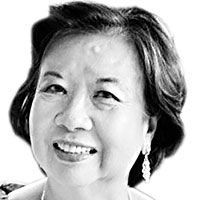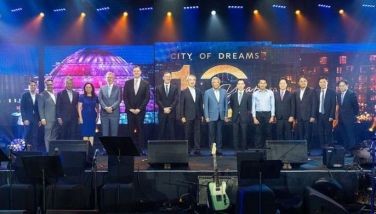Is a State of the Nation Address necessary?

We are so fond of abbreviations that meanings of the original words are lost. Take the case of SONA which is the abbreviation of the State of the nation address, a practice we borrowed from the Americans and two other Western countries. The event is trivialized by the abbreviation.
The head of state, in our case, the President of the Philippines, gives the speech before Congress. The main reason for the speech is to inform the lawmakers of what has been accomplished in the year by the Executive. But more important is to ask for legislation required to continue the program and institute government reforms.
This presupposes that we have a Congress functioning as true representatives of the people. That is why it is directed towards the nation (the people) through their representatives.
That is not what happens because there is an antagonistic attitude between the Executive and the Legislative in our presidential system of government. They call it gridlock but it is more than that.
In a larger sense, the members of Congress are not true representatives of the people. They are decorations more than serious workers and some of them do not know their function as lawmakers but are there for self-interest on how to earn back the money they spent for campaigning. Netizens have captured the mood of Congress with pictures of Senator Franklin asleep.
Through the many years I have been attending State of the Nation addresses I don’t get the impression that this working background of the President addressing the lawmakers of legislation he needs for his program of government is what is being accomplished in the State of the Nation event.
First of all, because of our colonial background and the imposition of English as our lingua franca the majority of Filipinos do not understand the speech especially with past presidents who read from written speeches. The state of the nation in Pilipino is Talumpatì sa Kalagayan ng Bansâ. Through the years, the speech is delivered every fourth Monday of July at the Plenary Session Hall of the Batasang Pambansa Complex in Batasan Hills, Quezon City, Metro Manila.
Guests are told to come early or be caught in traffic when police close streets leading to the Batasan and sending protesters at a distance from the Congress site.
The President delivers his state of the nation address at around 16:00 PST (UTC+8). Seats are a premium and more often you have to be connected with government or a friend of a government official. My invitations came from the Office of the long-time speaker, Jose P de Venecia III who is a friend.
Before the President’s arrival the audience of Senators and congressmen, former presidents their wives walk in to take their seats. Those in the upper seats, gov’t officials and the members of the diplomatic corps take their seats. During the wait they walk around take their seats come in as if it was a fashion show.
And then we wait for the arrival of the President. His arrival is often announced by the whirr of an arriving helicopter.
For those who have not been to a State of the Nation address here’s a description of what happens. The President is welcomed with military honors, and greeted by the Speaker of the House, the President of the Senate, and the welcoming committee, before proceeding to the Presidential Legislate Liaison Office. They enter to the tune of the National anthem.
The ceremonies are very solemn. The Secretary General introduces the President, who approaches the rostrum and is seated. The President of the Senate and the Speaker of the House then convene the joint session, and the House of Representatives Choir leads the now standing assembly in singing Lupang Hinirang. Representatives of various religious groups then lead the assembly in an ecumenical prayer.
It is a ritual more than a necessary process for good government. The working relationship between Congress and the President happens outside that hall more whispered rather than talked about openly. The guiding apparatus of communication is quid pro quo.
What to expect in Duterte’s third of the nation address, his special assistant Bong Go said that Duterte’s speech is 20 pages long and will tackle his campaign against illegal drugs, corruption, and poverty. The rehabilitation will also bring up the rehabilitation of war-torn Marawi City.
“Tatalakayin niya yung kanyang political will na gawin kung ano yung mga plano niya sa bansa,” Go said. That is what will take time although Duterte said his speech will not exceed 35 minutes but I doubt it. This president is addressing not just giving a speech but giving a comprehensive state of mind for the country not just in that hall but everywhere Filipinos can be found here and abroad.
Duterte earlier vowed to assistants that he will keep his third SONA short, not exceeding 35 minutes. But Duterte being Duterte, it will be difficult for him to put limits to his speech for his state of the nation address.
Duterte’s first SONA in 2016 ran for one hour and 32 minutes described as the longest first state of the nation address in history. His 2017 SONA was longer, lasting two hours. The speech was one thing but the comprehensive state of mind that he wants to impart to his countrymen is different.
Harry Roque, Duterte’s spokesperson said Duterte will call on Congress to approve the proposed federal charter and other measures such as the rice tariff during his speech.
Historically, an early form of the Address was in place during the First Philippine Republic, which was established in 1899 in Malolos, Bulacan. The revolutionary government took ideas from European parliaments, where the magisterial role of the head of state in the legislature was to mark the legislature’s official opening.
The Malolos Constitution of 1899 provided for the President to preside over the opening of Congress, as well as convey his messages to the legislature through a secretary. When Emilio Aguinaldo addressed the Malolos Congress in Spanish on September 15, 1898, he simply congratulated the formation of the first representative body of the Philippines and Asia. This is not considered a State of the Nation Address because it was not mandated in the Malolos Constitution.
- Latest
- Trending





















